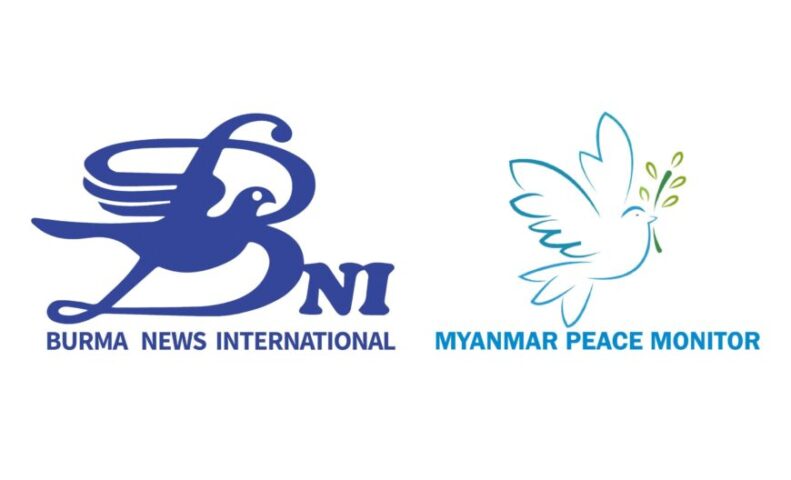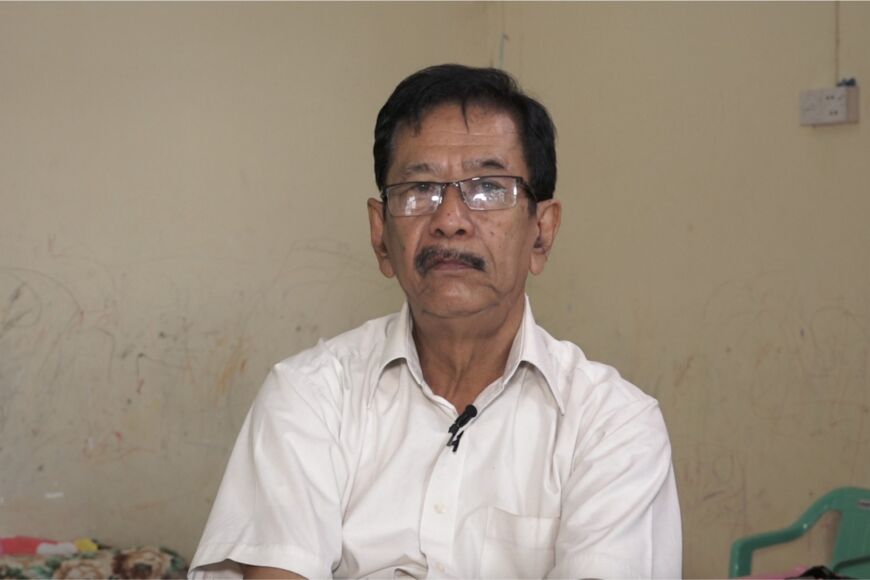An interview with political and ethnic affairs analyst U Than Soe Naing.
April 21st, 2022
In the first week of April, there was a clash between the UWSP/UWSA and the RCSS/SSA in Monehta area in Monghsat in the east of Shan State. Both sides suffered casualties in the fighting.
The NMG interviewed political and ethnic affairs analyst U Than Soe Naing about why the fighting is taking place, who, which organizations and which countries are involved behind the fighting and the spread of fighting between EAOs in northern Shan State, to the southern Shan State.
Q: Fighting between the Restoration Council of Shan State (RCSS) and the United Wa State Army (UWSA) resumes in the southern Shan State. May I know our view on why the fighting resumes and whether the big countries are involved in the clashes behind the case?
A: There is no involvement of the superpowers in the case. The UWSA and two groups have won the support from the superpowers and the countries which are said to be the superpowers. But, the current fighting has nothing to do with the instigation of the superpowers.
Q: The RCSS constantly told the media that it moved from the southern Shan State to northern Shan State as it is a former controlled area. I want to know why the RCSS entered the northern Shan State. Were the areas in the northern Shan State the RCSS’s controlled areas? What is the reason behind the case?
A: The RCSS is the successor to the group led by U Khun Sa who surrendered to the army. U Ywet Sit which is now the chair of the RCSS reestablished the army when U Khun Sa surrendered to the government. U Khun Sa is a person who tried to establish the Shan Republic. Ywet Sit seems to have a dream of establishing the Shan Republic. He viewed that the places where Shan people are living are related to him. He must get involved in it. Shan people must be under his influence. He is thinking about the invasion of his troops into Hsipaw, Theinni and Nankham in northern Shan State as Shan people are living there. But one point is Ywet Sit has signed the Nationwide Ceasefire Agreement (NCA). The Shan State Progressive Party (SSPP) (north) has not signed the NCA. The Tatmadaw helped the movement of the RCSS troops in northern Shan State. So, thousands of the RCSS members were present in northern Shan State, according to the news coverage.
Q: After the NCA was signed, the fighting has spread from northern to southern Shan State. This is the fighting between the RCSS and SSPP and the RCSS and the Ta’aung National Liberation Army (TNLA). During this month, fighting also took place between the RCSS and the Wa in the southern Shan State. Why do these fighting take place? What are the impacts of these fighting?
A: The current fighting is like the fire fuelled by paddy husk. There were smoldering conflicts. At the request of the Tatmadaw, the UWSA helped attack in order that U Khun Sar surrendered. Then, Tatmadaw carried out the handover of U Khun Sa’s territory to the UWSA. The Wa force relocated around 30,000 Wa people from the north to the171 military region. That place is a major opium trading hub near Thailand. The area was controlled by U Khun Sa. The UWSA established the 171 military region there and moved thousands of Wa people from the north for the settlement. The U Ywet Sit-led RCSS attempted to settle in Loi Tai Leng adjacent to the 171 military region which was a part of U Khun Sa’s territory.
To be frank, China backs the UWSA. Thailand helps U Ywet Sit as they are Shan ethnics. Another point is Thailand helps U Ywet Sit as a buffer zone as Thailand is worried that the force like China-backed UWSA may arrive on the Thai border. There was no conflict although Loi Tai Leng and 171 military region are adjoining areas. The ongoing fighting is the result of the clashes in northern Shan State. The RCSS had to move to the southern Shan State in the fighting between the SSPP and the RCSS in northern Shan State.
The Wa force helps the SSPP and the Ta’aung and drives the RCSS off to the south. Fighting will continue as it is the place near the border of Loi Tai Leng and the 171 military region. So, fighting may continue to fight for jurisdiction over a territory and the extension of area. This place is especially an important place for opium production and trading with Thailand. China doesn’t want an increase in the number of forces from Thailand. At the same time, Thailand doesn’t want the arrival of China-backed Wa forces on its border. So, fighting will continue. But I think there will be no large-scale war. I assume that there will be fights for jurisdiction over a certain territory.
Q: May the proxy war between the US and China occur in Shan State from the international point of view if the situation continues in the long-run? May I know your view on it?
A: There is no reason for the emergence of a proxy war. Because the US no longer supports Thailand as its big ally. The US is interested in the opium problem from the conflict-hit Mongton and Monghsat to the Thai border. The US’s advisors in Thailand are from the Drug Enforcement Administration (DEA).
The US army has no direct involvement in it. The case will be related to the CIA if the DEA is involved. What I want to say is there is no big military force of the US in Thailand to become a proxy war. Another point is the US has not deployed the troops in Thailand, which can compete with China. I think it will not reach a stage of becoming a proxy war. It will come to an end with the region-level fighting.
Q: What are the impacts of the shift of fighting from the north to south of Shan State and the conflicts in northern Shan State, on the races in Shan State and other parts of the country? Is it related to the Spring Revolution?
A: The current crisis in Shan State has nothing to do with the Spring Revolution. The fighting in Shan State is between the MNDAA of U Phone Kyar Shin and the military council in Monekoe of Shan State. As it is related to the Northern Alliance, the fighting has an indirect relation with the Spring Revolution. The current fighting in Shan State is due to the extension of influential areas to fight for jurisdiction over a territory between Shan races, taxation areas and the recruitment of new soldiers.
The RCSS has to carry out the withdrawal of the troops to Loi Tai Leng. There are not many troops left in the central Shan State. However, some RCSS troops remain in Naunglon and Kyaukgu where the Communist Party of Burma was stationed in the past. The UWSA will help the SSPP fight the remaining forces. Or else, there may be some clashes. I expect they are in a position to withdraw to the southern Shan State.
Q: My last question is the military council dropped the bombs by flights to help the RCSS in the clash between the SSPP and the RCSS in Kyaukgu. May I know your view on it?
A: As a matter of fact, there is a relation between the RCSS and the military council for interest. The RCSS signed the NCA. Neither the UWSA nor the SSPP signed the NCA. The military council may extend a helping hand to the RCSS. However, the military council sticks to the policy of watching the tiger fighting from the mountain. The military may watch the situations with the use of flight. But I think the military will not be involved in the clash.
Sent by the NMG.

